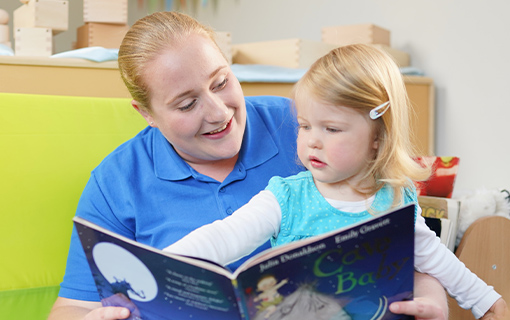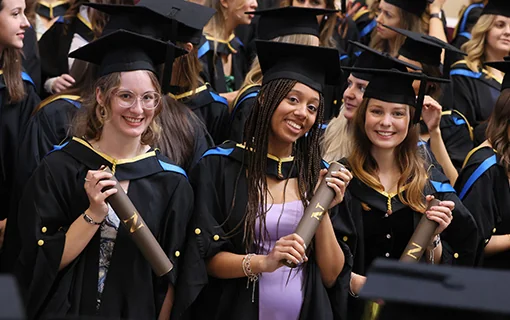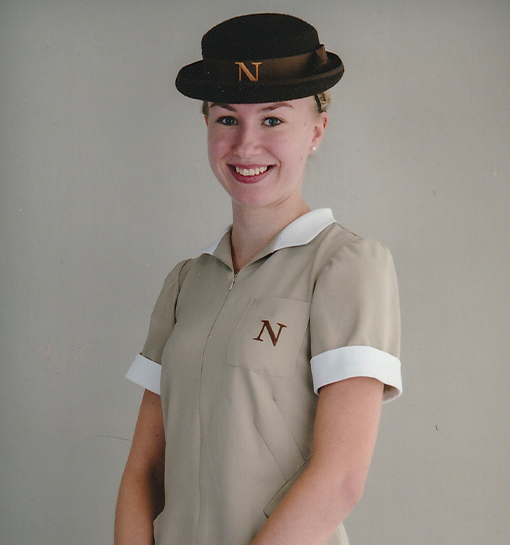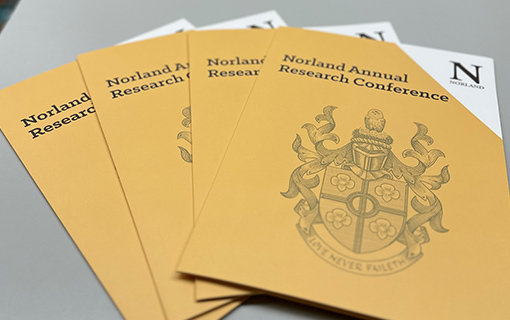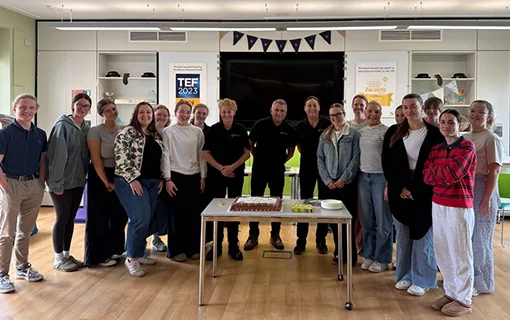National Storytelling Week: Top tips on storytelling with children
4 February 2021

As part of National Storytelling Week, Norlander Elizabeth Harvey, who teaches practical diploma masterclasses and manages Norland’s events programme, and Kat Aveyard, library assistant and early years assistant lecturer, reminisce over their love of storytelling and share tips for reading stories to children.
Elizabeth: I love reading and telling stories to children. It is such a special time.
Kat (pictured here reading as a child): When I was a child my father didn’t really like to read me stories. He liked to tell me them. Some of my fondest childhood memories are of my father making up strange and unusual tales, including favourite soft toys as heroines, elderly neighbours as wise old wizards or adapting familiar traditional stories to end with an unusual twist.
I often worried about the characters whose stories didn’t have the happily ever after ending. The tale of The Three Little Pigs for instance. However selfish and cruel the Big Bad Wolf was, it broke my six-year-old heart to hear of him ending up in the pot. ‘What if he just wanted to join in but didn’t know how to play nicely?’ I would fret. ‘Surely the pigs aren’t actually very nice if they want him to end up hurt’ I would cry, my moral compass spinning wildly, unsure of where my allegiances should lie. And so was born The Adventure of Wolfe the Circus Worker. My father explained that the wolf was in fact rescued from the roof of the chimney of the third pig’s house, in a hot air balloon that happened to be passing at the opportune moment. It was piloted by the ringmaster of a travelling circus who was seeking to employ a hard-working wolf in need of lodgings. Wolfe worked his days at the circus each week sending a letter and a cheque (no internet bank transfers in my childhood!) to the pigs to help them rebuild their homes and repair their friendship.
I don’t remember exactly what happened in the end; there would have been multiple different endings over the years, changing and adapting, responding to mood or circumstances. Through the situations and choices of the characters in his stories, dad helped me to understand how to resolve disputes, find the words to describe emotions or help explain to me otherwise unfathomable events.

Elizabeth: You have just told me a lovely story Kat, conjuring wonderful images, thank you. What an interesting twist to the story to support your understanding of the world.
Funnily enough, one of my childhood memories of bedtime was my father making up stories which would continue over many nights, all made up from his imagination. I feel it is a family tradition as I find huge satisfaction in making up stories with children.
Kat: In the present climate, face-to-face storytelling is not always possible or appropriate. However, by using video communications or telephone calls we can still engage in sharing stories with each other, however far away we may physically be.
Elizabeth: Yes you are so right Kat. Our granddaughter has recently enjoyed her first birthday, and video calls have helped our interactions with her. The anticipation of reading to her as a tiny dot was so exciting, however, this has not been easy over the last year and I am so delighted that her parents started reading to her when she was but a few months old.
I think story time is a special part of the day and can happen anytime and anywhere. Storytelling can be an opportunity to get lost in other worlds, cultures and scenery. It is a time for relaxation, and bonding and so very much more.
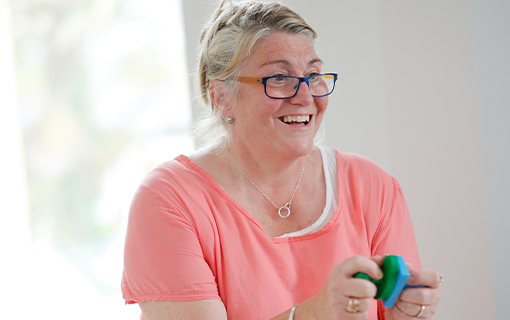
Kat: Storytelling reminds us that tales do not simply need to be contained to the words on the page or the images in the book. The traditional of oral storytelling is an ancient artform and has been used by people all over the world to inform, engage and entertain one another for centuries. 30 January – 6 February is National Storytelling Week and is a time to reflect on the history and art of storytelling, making time to find new ways of celebrating this artform and including it in our modern lives.
Elizabeth: On a train journey with my two charges, they asked if I would tell them a story. They were great readers, which was a delight, but sometimes one or both found it hard to read on a train. As they explained, the wobble of the carriage made them feel funny. In my nannying days, train carriages were not as stable as they are today. But I must stress they were not steam trains either! We started our story with input from the boys and a phantasmagorical tale was created. The stop before our destination arrived and I said we had to pause the story but would carry on with it that evening.
At this point, a gentleman sitting behind the boys popped his head round his seat and said how disappointed he was not to hear how the story ended, how he had enjoyed listening in and had been transported back to his childhood.
Kat: As adults we often still ask for stories. We ask friends of friends or couples ‘how did you meet?’, relishing in the funny or sentimental details rather than the simple facts of the place or event. Narrative stand-up comedy, a favourite style for many adults, is an acknowledgment of shared experiences and details of personal journeys, it is the telling of a story.
Elizabeth: I agree. I so enjoy belonging to a book club to share books we have read. Stories do not have to always contain dragons, magical beasts and superheroes. Stories can be everyday events, retold. We all have a story to tell.
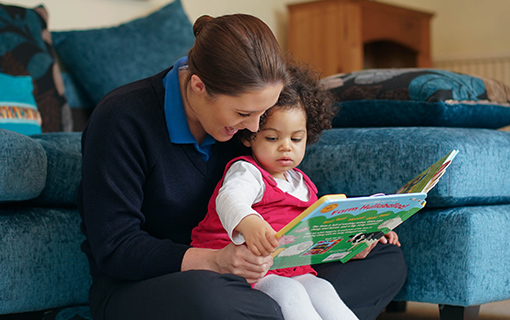
Kat: There are potential stories all around us, always chances to turn a simple object into the protagonist of your tale. A series of words that can be simple stimulus for the most magical of adventures. Though stories can be, they do not need to be, great feats of imagination. Traditional tales can be recited or retold, or you can simply share the story of you. We all have lived events we can recount.
We have both observed that children love to hear stories repeated, feeling safe in the knowledge that they already know the ending. With the mystery gone and the uncertainty resolved, they can relax and delight in the joy of the details, allowing for embellishments or edits with each retelling or adaptation. Understanding the formula of how a story works allows for freedom to explore unusual ways to arrive at a resolution.
Elizabeth: Let’s share our top tips for storytelling:
- Be comfortable, making sure the environment is appropriate to support engagement.
- Consider having a starting cue such as ‘are you sitting comfortably?’ or ‘once upon a time’. This is will help prepare the children to know that a story is about to be told.
- If you choose to retell a familiar story, make sure you know the content and are prepared for questions.
- Keep the story interesting by adapting voices, changing volume and tempo remembering which vocal characteristics you have chosen for each role.
- Introduce appropriate props to engage and encourage participation.
- Keep your story simple, less is more.
- As your confidence grows you could try asking the children for suggestions of what to include in the tale such as characters, situations, names and places.
- When out and about think about how the items you have with you could transform into stories- the comb at the bottom of your handbag could belong to Rapunzel or be used to groom a unicorn’s mane.
- Using the story as a stimulus for other activities- baking the ginger breadman’s house, planting Jack’s magic beans or tending Peter Rabbits lettuce.
- Enjoy the experience! The more you try the more confident you will become.
The Society Of Storytelling has a plethora of information, tips and advice around storytelling which are available on their website via the button below.
Storytelling tips